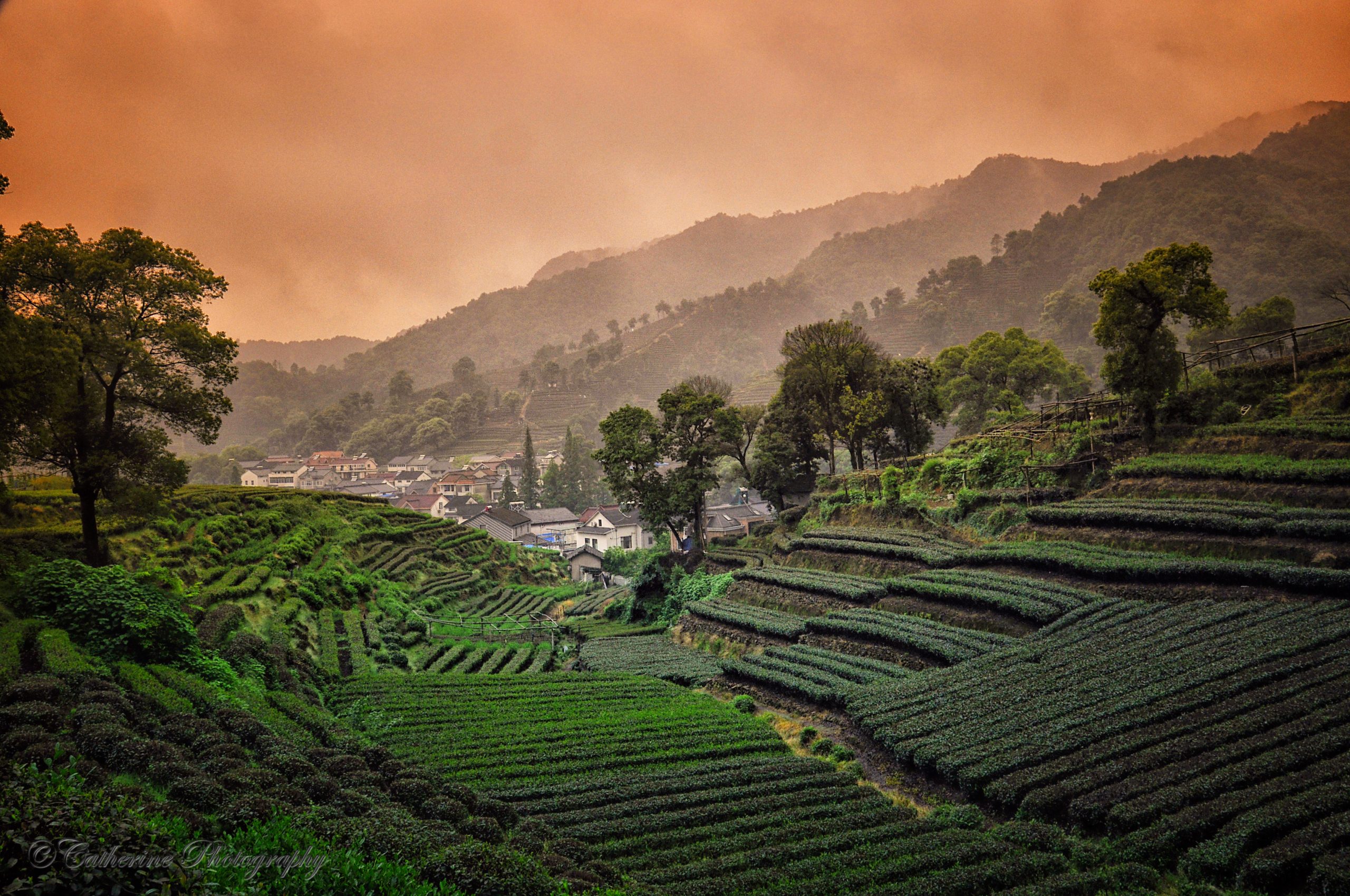Tea, a beverage steeped in tradition and history, has been an integral part of Chinese culture for centuries. As the birthplace of tea, China boasts a rich tapestry of tea plantations that dot its diverse landscapes. These plantations not only produce some of the finest teas globally but also offer travelers a unique and immersive experience. In this exploration, we will traverse the lush hills and mist-covered valleys to discover the must-visit tea plantations in China, where the art of tea cultivation and the beauty of nature converge.
- Hangzhou: Longjing Tea Plantations
Our journey begins in Hangzhou, where the legendary Longjing tea plantations sprawl across the West Lake region. Longjing tea, also known as Dragon Well tea, is renowned for its flat, slender leaves and delicate flavor. The plantations are nestled in the picturesque hills surrounding the lake, creating a serene atmosphere that complements the tea’s subtle and nuanced taste.
Visitors to Longjing can partake in the traditional tea-picking experience. Against a backdrop of emerald-green terraced fields, locals and tourists alike pluck the tender leaves, an ancient practice that connects them to the land and the tea-making process. The vibrant tea culture is further enhanced by tea houses perched along the hillsides, offering panoramic views of the plantations and a chance to savor freshly brewed Longjing tea.
- Fujian: Wuyi Mountain Tea Plantations
Venturing southeast, the province of Fujian beckons with its Wuyi Mountain tea plantations. Wuyi tea, including Da Hong Pao and Shui Xian, is celebrated for its complex flavors and the unique terroir of the Wuyi Mountain region. The mist-shrouded peaks and rocky cliffs provide an enchanting backdrop to the tea fields, creating an atmosphere steeped in mystique.
Wuyi Mountain is a UNESCO World Heritage site, recognized not only for its tea culture but also for its biodiversity. Travelers can embark on scenic hikes through the Wuyi Mountain Scenic Area, immersing themselves in the breathtaking landscapes and discovering the ancient tea trees that have stood witness to centuries of tea production.
- Yunnan: Puer Tea Plantations
Our tea odyssey takes us southwest to Yunnan, where the Puer tea plantations thrive in the misty mountains. Puer tea, fermented and aged, is a unique variety that captivates tea enthusiasts with its robust flavors and health benefits. The ancient tea trees of Yunnan, some dating back over a thousand years, contribute to the distinctive character of Puer tea.
Yunnan’s Puer tea plantations are often nestled in remote and pristine areas, allowing travelers to escape the hustle and bustle of urban life. The journey to these plantations is an adventure in itself, as visitors navigate through lush forests, cross babbling streams, and ascend to elevations that offer breathtaking views of the surrounding landscapes.
- Anhui: Huangshan Mountain Tea Plantations
Heading eastward, we arrive at the renowned Huangshan Mountain tea plantations in Anhui province. Huangshan Maofeng, a green tea with delicate leaves resembling the downy fur of a newborn animal, is cultivated in the misty high-altitude regions of Huangshan. The unique climate and fertile soil contribute to the tea’s exceptional quality.
Visitors to Huangshan can combine their tea exploration with a hike up the storied Huangshan Mountain, known for its ethereal beauty and ancient pine trees. As the rising sun bathes the landscape in a golden glow, tea enthusiasts can savor the tranquility of the surroundings and indulge in the pure and refreshing taste of Huangshan Maofeng.
- Taiwan: Lishan Tea Plantations
While not part of mainland China, Taiwan’s Lishan tea plantations are an indispensable stop on any tea lover’s itinerary. Nestled in the Central Mountain Range, Lishan tea benefits from the high altitudes and cool temperatures that contribute to its unique floral and creamy notes. The terraced fields, often shrouded in mist, create a dreamlike ambiance.
Travelers to Lishan can witness the intricate process of oolong tea production, from hand-picking the leaves to the precise methods of oxidation and roasting. The local tea farmers, deeply connected to the land, are eager to share their knowledge and passion for tea, offering a genuine and immersive experience.
Conclusion
Tea and travel intertwine in the verdant landscapes of China’s tea plantations. From the storied hills of Hangzhou to the misty mountains of Yunnan, each region offers a distinct tea culture, shaped by centuries of tradition and craftsmanship. These plantations not only produce some of the world’s finest teas but also provide a gateway for travelers to delve into the heart of Chinese tea culture.
As you traverse the tea-scented hills, participate in traditional tea-picking ceremonies, and savor freshly brewed cups overlooking terraced fields, you will find yourself not just tasting tea but experiencing the rhythm of life in these serene and enchanting landscapes. The must-visit tea plantations in China beckon, promising a journey of sensory delights, cultural immersion, and a profound appreciation for the artistry behind every cup of tea.
